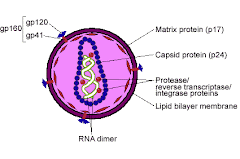"The idea of rehabilitating addictive behavior has existed since the beginning of the early temperance movement in19th-century America. This movement, which began in the 1800s, gave rise to our modern notions of addiction and the need for our society to help alleviate the suffering of its addicts.
The goal of the temperance movement was abstinence, or the complete disuse of a substance -- in this case alcohol. Eventually, alcohol became identified as an agent of social decay, and the movement increasingly believed that it was up to society to care for its alcoholics by doing away with any spirituous beverage.
The organization gave birth to the first rehab centers in the United States, called "sober houses," where men lived collectively, sequestered away from the temptations of the world. Sober houses were set up as early as 1840 in cities like Boston and New York by the Washingtonian society, a branch of the temperance movement.
The temperance movement began to focus on the general public. If society could be free of alcohol, they reasoned, then it could then be free of alcoholics.
After a century of gaining momentum in their beliefs and membership, the temperance movement helped to get the Prohibition Act -- the law that outlawed the sale, possession or consumption of alcohol in the United States -- passed in 1920. But American society as a whole wasn't prepared to give up its booze, and the law was repealed 13 years later. The experiment had a lasting effect: If America couldn't provide its alcoholics with a country free of temptation, alcoholics needed a refuge within the larger society where they could be free from the temptation of alcohol: rehab.
Eventually providing treatment for addicts was taken from the hands of goodwill societies and placed in the trust of the medical field. As medical science came to play a larger role in caring for the world's addicts, treatment came to be moved into more of a clinical setting. Rehabilitation now took place in hospitals, psychiatric wards and sanitariums.
This isn't the only contribution that temperance made to our modern rehabs. It also gave rise to fraternal organizations, like the International Order of the Good Templars, which served in part as support groups. These groups set the stage for America's first organized support-group treatment program, Alcoholics Anonymous (AA). Cofounded by Robert Smith and Bill Wilson (Dr. Bob and Bill W.) in 1935, AA created the 12-step program.
Throughout the 20th century, thanks to the success and popularity of programs like AA, it became clear that treatment programs were a viable solution to the nation's substance-abuse problems. As a result, President Richard Nixon was the first commander in chief to create federal funding for treatment programs. The budget for his antidrug policy, which would serve as the origins of the War on Drugs, was divvied up, with one-third toward eradicating the supply (police enforcement), and two-thirds toward getting rid of the demand (treatment). When his successor, President Gerald Ford, came to office he cut the budget for federal funding of treatment programs, making the division fifty-fifty.
This is ironic, because it was President Ford's wife who founded one of the United States' iconic rehab facilities, the Betty Ford Clinic. Mrs. Ford developed an addiction to alcohol and prescription medication in the 1970s, and as a result, she opened the Clinic in 1982 as a way to help others who shared her problem.
In the 1980s, the proliferation of private residential treatment facilities mushroomed. The peak of the War on Drugs fueled fears of addiction, and fueled the demand for rehab treatment. Interestingly, as the War on Drugs was showing a major effect on reducing drug usage in the United States, the use of rehab facilities in the country continued to increase.
So what kind of treatment is offered at these facilities, and how do they help addicts recover from their dependency?"
Thursday, September 13, 2007
The History of "Rehab"
Blogs'FamilyCorruptionInTheBigEasy||
FamilyCorruptionInTheBigEasy: Part 2
Posted by
Boop
at
1:33 AM
![]()
Labels: drug abuse, drug addiction, drug addicts, drug rehab
Subscribe to:
Post Comments (Atom)


















No comments:
Post a Comment